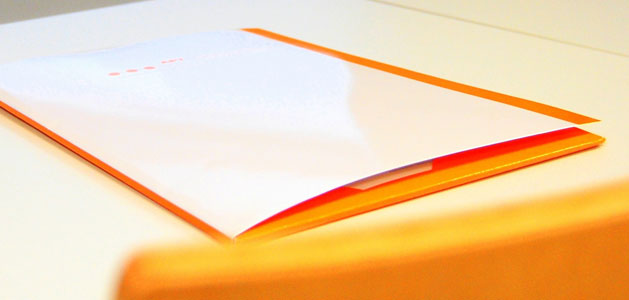Design Thinking in the Classroom
Learning through a design challenge

As children move from kindergarten, through middle school, and to high school, instruction shifts from stories to facts, from speculation to specifics, and imagination fades from focus. Design Thinking provides an alternative model to traditional ways of learning academic content by challenging students to find answers to complex, nuanced problems with multiple solutions and by fostering students’ ability to act as change agents.
Design Thinking is all about building creative confidence — a sense that “I can change the world.” In the Bullies & Bystanders Design Challenge, the students discovered that changing themselves might be even more important.
The Bully and the Bystander
This challenge began with a short story and ended with tears and a new-found sense of empathy for both bullies and bystanders. As the school year was coming to an end, middle school literacy teacher Melissa Pelochino wanted to leave her students with something powerful. She succeeded.
Melissa had attended a Design Thinking workshop for teachers at Stanford’s d.school. The workshop focused on the six stages of the design process: understanding, observation, defining a point of view, ideating, prototyping, and testing. After completing their own design challenge, participants discussed how to bring this vibrant, human-centered, empathy-driven interactive process to their classrooms.
In the weeks following the workshop, Melissa began implementing design challenges in her classroom. Using short stories as springboards, she introduced her students to Design Thinking. “Everything changed when I began using the design process as a vehicle for instruction. Engagement in school increased as students became responsible for their own learning. The purpose for reading changed from “I am reading because my teacher told me to” to “I am reading because I need to solve this problem.”
For the final challenge of the school year, Melissa read The Other June to her students as the springboard for their design challenge. This young adult novel chronicles the experiences of a young girl who was teased and tormented by a classmate. This design challenge spoke to students’ real life experiences, as bullying thrived on their urban campus, where classrooms were housed in corrugated metal portables and conflicts colored the school day.
As they read the story, students focused on uncovering the needs of the bully and the bystanders. When Melissa asked the students to brainstorm what they knew about bullying, students shared comments like:
“A bully tries to make someone feel insecure about themself.”
“It doesn’t have to be people that are smaller than you—it can be people that are bigger.”
“If you don’t stand up to a bully they’re just gonna keep on doing it.”
Hidden Camera
As part of the observation and interviewing phase of the design process, seven students decided to conduct an experiment. They set up a hidden camera outside their classroom. As other students approached, they enacted a scene where one of them was being bullied. They circled the ‘victim’ with taunts like “Where did you get those pants—like the Goodwill [second hand] store?” and waited to see what would happen.
Students were astounded when only two people stopped to help and six others walked by. They followed the bystanders who walked by and questioned them. “Why didn’t you stop? Dude, you didn’t want to? You’re supposed to help the other person.”
They returned to their classroom after the experiment, discussed the results of their experiment, and imagined a bully-free world. “If people were more like Gina and Tim [the people who stopped to help] then there wouldn’t be bullying at all. There wouldn’t be a definition of a bully. There wouldn’t even be a word,” shared one student.
The Breakthrough
As they left class that day, Melissa gave each student a notepad and asked them to interview three people on bullying.
This observation experiment led most of the students to focus their interviews on the needs of bystanders. What did they need in order to help stop the bullying?
Students also used the task to reflect about their own actions. Eddie, who played the victim during the hidden camera experiment, interviewed someone he had bullied in the past. He shares, “I decided to interview Dwight, because to be honest, I bullied him sometimes and I wanted to see how he felt about bullies.” Dwight told Eddie it was “horrible.” After talking to him, Eddie said that he understood for the first time how it felt to be a victim of bullying.

Juan returned to share how he felt when he listened to a boy talk about how much it hurt to be bullied. “I told him that I would back him up, that he could come to me if he was bullied.”
Each student shared a personal story of how they had been bullied, either at home and at school. Their pain was palpable and their tears seemed a comfort. They truly understood the devastating power of bullying.
Change Agents
The next phase of the process spoke to the most impactful part of Design Thinking. The students tackled the challenge of how to stop bullying in their school. Most importantly, they had acquired the creative confidence to act as change agents in their own environment.
Students decided to create a prototype for a movie that showed the effects of bullying. They then shared it with another class to get feedback they would use to iterate. Students who watched the film were asked to share what they thought in a brief survey.
When the filmmakers reflected on the survey results, they felt as though they had not been successful in stopping bullying. Melissa led a discussion about what they should do next. They talked about brainstorming and trying to better define the problem. One student, Denee, suggested modifying the movie by incorporating some of the footage from the hidden camera tape.
Then, students began to discuss the heart of the problem: “We have to give them empathy.”
Melissa pushed them to think about how they might proceed. Denee said it was different for different groups. Viola chimed in, “If you just stand up to them, bullying would stop.” Edgar said, “The problem is that there are no leaders at this school.” Discussions about peer pressure, following the crowd, and making choices ensued.
Class ended for the day. But for these students, the impact of the design challenge was just beginning.














